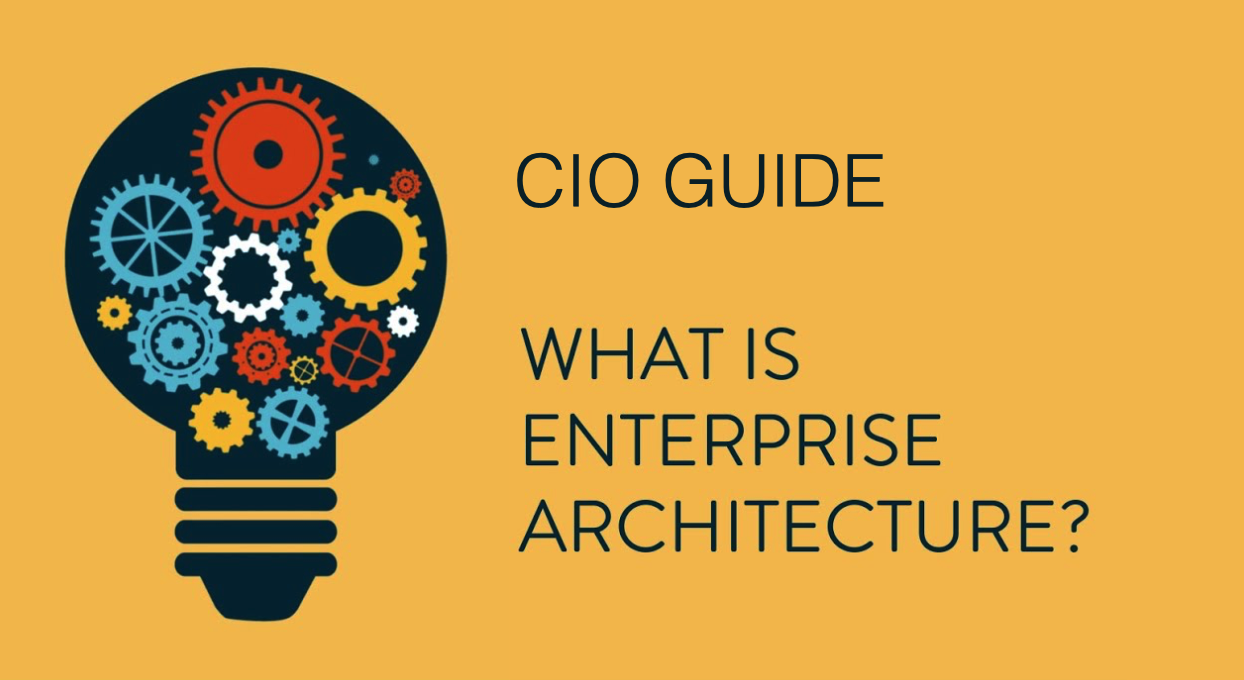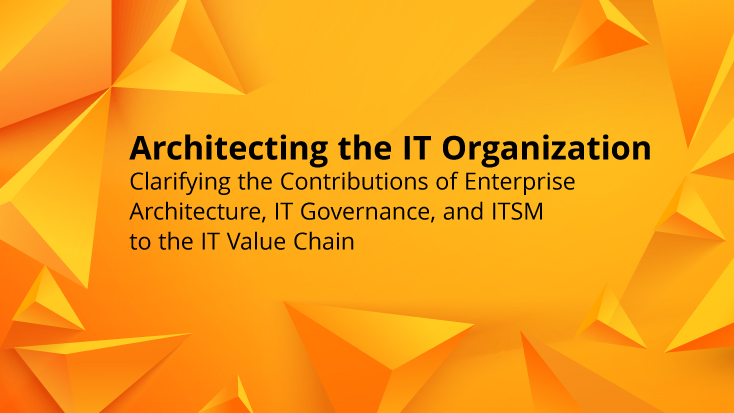The CIO's Guide to Governing Enterprise Architecture
The CIO’s Guide to Governing Enterprise Architecture

Introduction
In today’s rapidly evolving digital landscape, enterprise architecture plays a crucial role in the success of organizations. It provides a blueprint for aligning business strategies with technology solutions, enabling companies to optimize their operations, enhance customer experiences, and drive innovation. However, managing enterprise architecture can be a complex task, requiring effective governance to ensure its alignment with business objectives. In this comprehensive guide, we will explore the governance models that CIOs can employ to effectively oversee enterprise architecture and maximize its value.
Understanding Enterprise Architecture Governance
Before diving into the governance models, it is essential to understand the concept of enterprise architecture governance.
- Enterprise architecture governance refers to the set of processes, structures, and policies that guide the management and decision-making related to enterprise architecture.
- It provides a framework for ensuring that enterprise architecture initiatives are aligned with the organization’s strategic goals, adhere to industry standards, and comply with regulatory requirements.
The Role of the CIO in Enterprise Architecture Governance
As the chief information officer (CIO), you play a pivotal role in governing enterprise architecture within your organization. Your responsibilities include:
- Defining the governance framework
- Establishing clear roles and responsibilities
- Ensuring the effective implementation of governance practices
By effectively governing enterprise architecture, you can drive digital transformation, foster innovation, and enable agility in your organization.
Governance Models for Enterprise Architecture
There are several governance models that CIOs can adopt to govern enterprise architecture effectively. Each model has its own strengths and considerations, and the choice of model depends on the organization’s culture, size, and strategic objectives. Let’s explore some of the commonly used governance models:
1. Centralized Governance Model
In a centralized governance model, all decision-making authority and control over enterprise architecture reside with a central governing body, typically led by the CIO or a dedicated enterprise architecture team.
- This model ensures consistency, standardization, and centralized control over enterprise architecture initiatives.
- It enables efficient decision-making, promotes alignment with strategic goals, and facilitates the enforcement of policies and standards across the organization.
2. Federated Governance Model
In a federated governance model, decision-making authority and control over enterprise architecture are distributed across multiple business units or departments.
- Each business unit or department has its own governance body responsible for aligning enterprise architecture initiatives with their specific needs and objectives.
- This model allows for greater flexibility, agility, and customization of enterprise architecture solutions.
- However, it requires strong coordination and collaboration among the various governance bodies to ensure overall alignment with the organization’s strategic goals.
3. Hybrid Governance Model
The hybrid governance model combines elements of both the centralized and federated models.
- It strikes a balance between standardization and customization by establishing a central governing body responsible for defining enterprise architecture principles, policies, and standards, while delegating decision-making authority to business units or departments for implementing those principles within their specific contexts.
- This model provides the benefits of both centralized control and localized decision-making, enabling organizations to achieve a balance between consistency and flexibility.

Best Practices for Effective Enterprise Architecture Governance
Regardless of the governance model chosen, there are certain best practices that CIOs should follow to ensure effective enterprise architecture governance. These practices include:
-
Clear Governance Framework: Establish a clear governance framework that defines the roles, responsibilities, and decision-making processes related to enterprise architecture. This framework should align with the organization’s strategic goals and provide clarity on how enterprise architecture initiatives will be governed.
-
Engage Stakeholders: Involve key stakeholders from across the organization in the governance process. This includes business leaders, IT managers, architects, and other relevant stakeholders. Engaging stakeholders ensures their buy-in, promotes collaboration, and helps in making informed decisions.
-
Define Policies and Standards: Develop and communicate enterprise architecture policies and standards that guide the design, implementation, and management of technology solutions. These policies and standards should be aligned with industry best practices, regulatory requirements, and the organization’s strategic goals.
-
Continuous Monitoring and Evaluation: Regularly monitor and evaluate the effectiveness of the governance framework and the implementation of enterprise architecture initiatives. This includes conducting audits, collecting feedback, and making necessary adjustments to improve governance practices.
-
Promote Communication and Collaboration: Foster a culture of open communication and collaboration among stakeholders involved in enterprise architecture governance. Encourage knowledge sharing, facilitate cross-functional collaboration, and provide platforms for sharing best practices and lessons learned.
Frequently Asked Questions
Below are some common questions related to governing enterprise architecture:
-
What is the role of enterprise architecture in digital transformation?
Enterprise architecture provides a strategic framework for aligning business strategies with technology solutions, enabling organizations to drive digital transformation, enhance agility, and foster innovation. -
How does effective enterprise architecture governance contribute to organizational success? Effective enterprise architecture governance ensures that enterprise architecture initiatives are aligned with strategic goals, adhere to industry standards, and comply with regulatory requirements. This alignment contributes to organizational success by optimizing operations, enhancing customer experiences, and driving innovation.
-
What are the key challenges in governing enterprise architecture? Some key challenges in governing enterprise architecture include balancing standardization and customization, ensuring stakeholder engagement, managing complexity, and keeping up with technological advancements.
-
How can CIOs ensure stakeholder buy-in for enterprise architecture governance? CIOs can ensure stakeholder buy-in by actively involving key stakeholders in the governance process, communicating the benefits of governance, addressing their concerns, and demonstrating the value of enterprise architecture in achieving strategic goals.
-
How can organizations measure the effectiveness of their enterprise architecture governance? Organizations can measure the effectiveness of their enterprise architecture governance through key performance indicators (KPIs) such as alignment with strategic goals, adherence to industry standards, successful implementation of architecture initiatives, and feedback from stakeholders.
Key Statistics
-
According to Gartner, 75% of organizations are accelerating their digital transformation efforts, highlighting the crucial need for enterprise architecture.
-
A recent survey by Deloitte found that organizations with mature enterprise architecture practices achieve 18% higher revenue growth and 15% higher profit growth compared to competitors.
-
Effective enterprise architecture governance can lead to over 30% faster time-to-market for new products and services.
Conclusion
Effective governance of enterprise architecture is essential for organizations to leverage its full potential in driving digital transformation and achieving strategic goals. As a CIO, understanding the different governance models and implementing best practices can help you navigate the complexities of enterprise architecture governance. By aligning enterprise architecture with business objectives, engaging stakeholders, and continuously monitoring and evaluating governance practices, you can ensure that your organization maximizes the value of enterprise architecture and stays ahead in the competitive digital landscape.
Remember, the success of enterprise architecture governance lies in striking the right balance between standardization and flexibility, collaboration and control, and innovation and compliance. With a well-defined governance framework and a proactive approach, you can lead your organization towards a future of digital excellence.
So, embrace the power of enterprise architecture governance and unlock the true potential of your organization!
Find more about our CIO Insights on Blog
Find more about our conprehensive Enterprise Architecture Guide